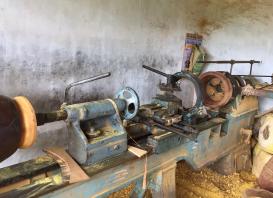How do craftspeople know what they know? How is acoustic knowledge embodied in skills and labor? How do instrument makers relate to musicians as instrument users? And how have instruments and the practices of instrument making changed with the practices of instrument use? These are some of the questions that Thamarai Selvan and I investigate in our historical study of the making of musical instruments, acoustic knowledge, and musical practice in South India. Musical practice in South India has so far been explored mainly from the point of view of the musician as the instrument user, rather than the craft communities who make the instruments; we want to turn this around by taking the perspective of the craftsperson. Practices of instrument making and music performance have been separated by caste and community boundaries, reflecting the social hierarchies of Indian society; we address both aspects in tandem. And the image of instrument making and music performance has been one of unchanged tradition, yet both underwent significant changes in the nineteenth and twentieth centuries. What did this mean for the people who made the instruments? How did they innovate and adapt to new instruments and technologies? We study the practices of artisans and craft workers historically, not in opposition to modern science and technology but as a means to understand what the prism of practice can tell us about their interrelations.

Lathe in a drum workshop in Panruti, India, 2018 (Photo: Roland Wittje)
Project
(2019)
